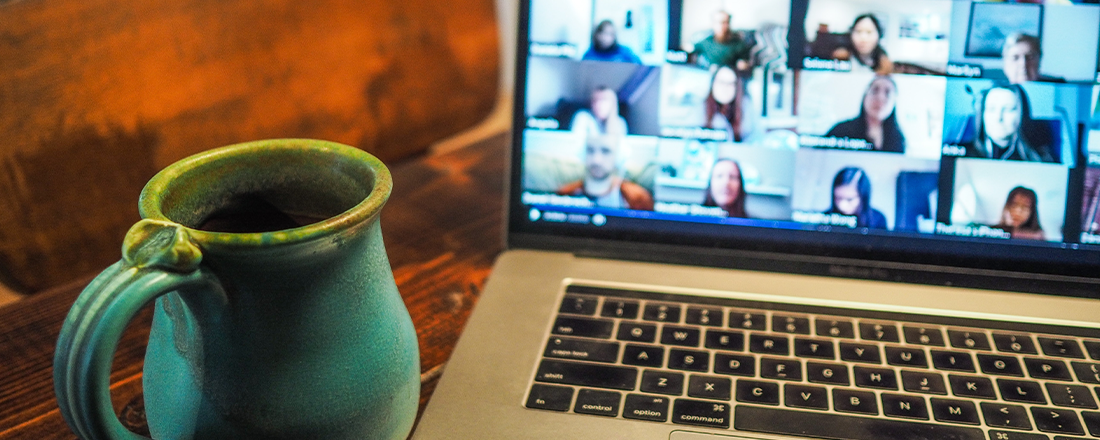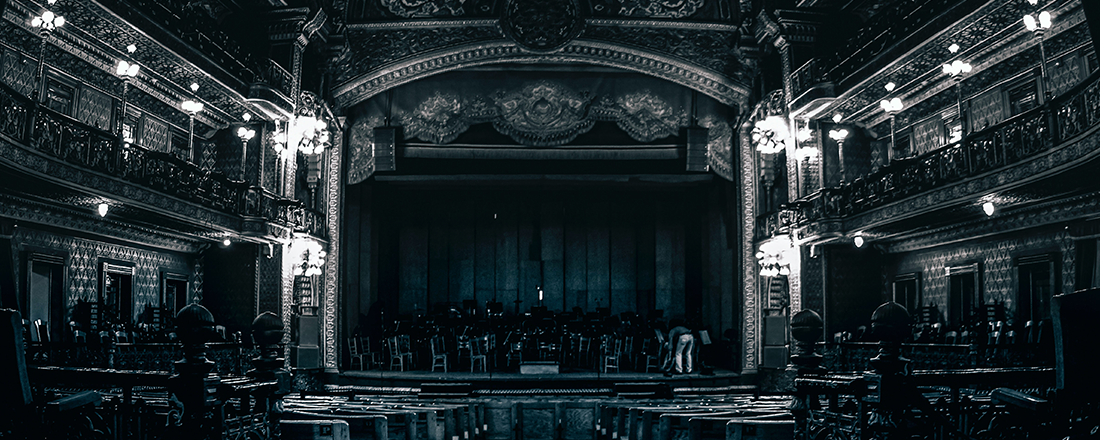ANGELINA CHAIRIL
The Show Must Go On… (Line)
“3 nights ago, I ordered a very slutty pizza…”
Such is the opening line from Phoebe Waller-Bridge’s acclaimed play, Fleabag. The play’s reputation has of course since been overshadowed by its notable BBC screen adaption. Nonetheless, having been on my personal bucket list of stage plays to see for a while, I saw a performance of this 65-minute play one Saturday morning in April.
National Theatre Live: Fleabag | Trailer | Source: © National Theatre/YouTube
No, I did not see it at Edinburgh Fringe, nor did I see it at Soho Theatre where it was subsequently re-staged. I saw it instead from the comfort of my own sofa — through my laptop screen, by way of Amazon Prime where it was available to stream for a limited period of time.
On the living room that one Saturday morning, the television blasting Peppa Pig on CBeebies courtesy of my 3-year-old niece; sound of breakfast being made courtesy of my mom at the not so distant kitchen; accompanied by my dog’s snoring sounds in the background; I put on my earphone as the one-woman show unfolds before my laptop screen. Slowly, the camera proceeds to zoom on Fleabag as she starts her soliloquy and proceeds to break the fourth wall; masterfully and flawlessly as she always does. At that instant I felt like I was on a Zoom call with our charming yet foul-mouthed protagonist.
I paid £4 to see this play, instead of the whooping amount of up to £600 that her audience were willing to pay to see the show live on stage. I paid £4 because it was to support a good cause, but also because it seems a totally reasonable amount to pay; to be genuinely entertained and mentally roused by a series of sharp and witty lines for a full 65 minutes. Right there and then I realized this previously unthinkable way of going to see a play would have to be the new normal — at least for the foreseeable future.
Everyone — not just those in the theatre industry — are facing an unprecedented juncture in their lives; and news of postponements along with cancellations have become our daily bread.
The chronological assessment of my life as a theatre audience is now divided into two categories comprising life pre-pandemic and post-pandemic. Regarding the former, over a month ago in March I recall seeing a play (The Lifespan of a Fact at the Singapore Repertory Theatre) not knowing it would be the last one I would see live for a while. The next play I was supposed to go see is the touring version of National Theatre’s War Horse. To nobody’s surprise, the play — along with just about any other activity which requires venturing outside of our homes — are very much cancelled. As a matter of fact, any other performances due to be staged in 2020 is now but a big question mark; postponed indefinitely, until further notice.
Everyone — not just those in the theatre industry — are facing an unprecedented juncture in their lives; and news of postponements along with cancellations have become our daily bread. As an industry rooted on the relational values of the audience and performers coming together in one physical space, theatre and its operations are left particularly paralyzed by this pandemic. This situation is comparable to being like a fish out of water. Nonetheless, content producers in the industry seems determined so far to deliver their works through digital means, regardless of the empty seats in the theater building, however disorienting this experience might be. The show must go on, they say. What do we make of this situation? Recorded performances have existed for a while but now more than ever they exist as an online ‘donation box,’ trying to squeeze every last drop of opportunity and monetizing its presence in the digital platform. They are more visible now that theater buildings are staying empty, and the audience retreats into their own respective homes. They are reaching a far wider range of audiences, and some might even prefer these digital presentations for economic reasons, convenience, or safety. Rightfully so, this issue has kept some in the online theatre community divided on whether going digital has more pros than cons.

Change is Not Always Bad
With regards to these somewhat drastic adjustments, it is comforting to recall that change has always been a crucial part of the industry’s development and growth; and it is only highlighting its greatest strength. Its versatility, adaptability, and the ability to employ creativity to reach out and stay relevant to the many different pockets of society.
This is a call to move away from actively trying to work within the confines of theatrical traditions; and give birth to new and unique frameworks whereby theatre could continue to exist.
In terms of how theatrical contents are presented for instance, the audience is accustomed to seeing transitions to theatrical architecture in the past few centuries. As the early days of modern theatre progressed to include a growing number of regular audience, more resources in terms of time and money are invested into the practice as a result, and It witnessed a gradual shift from performances staged outdoors to indoors. This gave birth to the proscenium stage which dominates the stages of Europe, between the 17th– to early 20th-century. Typically taking the form of a picture frame-like arch which provides a clear division between the area where the audience are seated and the stage, they also demarcate the real world of the audience and the fictional world happening on stage where the scenes unfold. The proscenium marked a significant development in the way theatre was presented consumed, as it marks a shift from the previously popular traveling theatre into a more permanent and standalone theater building.
History of Theatre 7 – The Arched Spectacle / Teatro Farnese (cc’s: English, Español) | Source: betapicts/YouTube
This permanent architecture also allows for better storytelling through changes in background scenery, as well as improved lighting and acoustics design; creating an illusion of depth as the story comes alive. Still a common element in many theatre productions today, the proscenium were thought to provide a sense of spectacle, creating an imaginary fourth wall into which all members of the audience observes the events taking place on stage from more or less the same angle. As the house light is dimmed and the stage light illuminates, the particular feeling of collective anticipation as we wait for a story to unfold is one which the outdoor stage might never achieve: the audience disappears, and they slowly blur into the scene as the first line is heard on stage.

More recently, the exciting rise of many independent theatre companies poses a healthy intrusion to this dominating force in the industry, through their questioning of the status quo. Their emergence re-examines the relational value of a performance and asks questions such as whether performances should bring the house a little closer to the stage. As consumers delve deeper within the industry in search of an exposure to a different kind of theatrical experience and companies facilitate the different modes of presenting them, the black box theater emerges as a more intimate setting for a performance. Essentially a venue with dark walls and a flat floor, most rooms can easily be transformed into a black box theater. Sometimes with the absence of the raised stage, audiences seated on the first few rows could almost see eye to eye with the performers; generating the feeling of an intimate encounter between individuals. The black box model also emerges alongside the need to readjust the economics of theatre production — larger traditional stages are designed to host more elaborate performances, which are costly and limited resources leaves little space for experimentation. Other than giving dramaturgs and plays of any budget and experience a stage to perform, the black box theater’s greatest appeal however is its ability to expose the charms of a staged performance that is most “human;” mostly stripped bare of possible interruptions from the spectacle of a larger scale production. As a result, the audience gets the chance to really focus on the precision of spoken words, facial mimicry, body language and the minuscule details which are easily overshadowed by the grandeur of the proscenium.
Theatrical Dictionary: Black Box | Source: TDF/YouTube
And Then Digital Technology Takes Center Stage
Seeing how rapid technological research advances in the past few decades, its prominence in our daily lives and inclusion in the arts we consume is inevitable. No longer is a theatrical production confined to conventional ways of performing a script, but a variety of gadgets have been more prominently featured as tools which enhances storytelling. Over the course of the last few years, I personally have encountered handful of plays which bears witness to this trend.
User Not Found – Traverse Festival 2018 | Source: Dante or Die/YouTube
Known for creating unique and intimate, site-specific theatrical performances, U.K.-based theatre company Dante or Die staged the play User Not Found in an existing London coffee shop, whereby both the actor and audience were seated as if they were all visitors of said café. Upon arrival at the venue, each member of the audience was presented with a mobile device and headphone, with detailed instructions on when they should put them on and use the device. The intimate performances by Dante or Die have been known to focus on interrogating contemporary human stories and often overlooked minuscule details that take place in everyday buildings. User Not Found was no exception, as it explores the question of what happens to our digital life after we die. Throughout the play as the protagonist narrates his life story, the audience were prompted to refer to their assigned mobile device, on which the protagonist’s phone activity is mirrored. The audience glances back and forth between the protagonist who moves around the set, and the screen on the palm of their hands unfolding memories and thoughts immortalized through social media posts. As the backdrop of the café remains stationary throughout the duration of the play, the shifting webpages on the screen introduces scene changes in lieu of a changing physical backdrop.
With the aid of digital technology, quotidian things such as a Facebook post or a tweet are elevated into a valuable tool which advances a performance into one that is immersive — as the audience were made to feel like they gained insights into the character in ways which makes them part of the play.
I find that the sharing of stories brings people out of their little bubble of isolation and into the shared headspace of belonging into a community.
Moreover, gadgets such as the virtual reality goggles has also gained in popularity as enhancements to storytelling in theatre. Having attended a few plays which involve the use of VR goggles, I personally think they are superb in efficiently transporting the audience momentarily to another time and space within the story line. While some may find this distracting (the act of having to put them on and take them off, accidentally bumping into other members of the audience while your goggle is on), they are effective in adding depth to a narrative and has consistently resulted in positive improvements to the play.
New theater experience blurs line between reality and virtual reality | Source: University of Iowa/YouTube
Exposures to these kinds of transitions could be seen as a kind of foreshadowing of what was to come; of the ways theatrical contents are presented to us presently. In light of recent circumstances, it has gone fully virtual, and this theatre-at-home model is our new reality, however much we try to convince ourselves otherwise.
They emerged and took shape unexpectedly, unplanned; albeit organically. And change, though inevitable, need not be seen as something particularly negative. In fact, in a recent article on the New York Times, Swiss dramaturg and artistic director of NTGent Theatre Milo Rau called for theaters to see this unique time as an opportunity to experiment with new forms of presenting theatrical content, rather than desperately attempting to operate as they were before the pandemic.
This is a call to move away from actively trying to work within the confines of theatrical traditions; and give birth to new and unique frameworks whereby theatre could continue to exist. It is calling them to re-think their business model — the framework of their existence. Cultural content providers are now forced to ask questions such as: who is my audience, really? How should I present and package my content to optimize outreach? Am I reaching the necessary audience? I was delighted to encounter these words because it reminded me that we ought to adopt such optimism not just in a way we consume contents of theatrical arts, but also in terms of how we stay productive during this peculiar time. Being in isolation could very much equal to an opportunity to shake things up, experiment on new ways that we can channel our creativity while trying to cope with the unfortunate circumstances which many of us are facing right now.
What Now, What’s Next?
Further pursuing a discussion on transitions, we are of course bound to think about their origins and how they have managed to survive. If theatrical productions have shown progress in transitioning to different modes of presentation, adopted technologies as a tool to enhance their craft, surely we would eventually discover ways to make the most out of digital theatre-at-home?
The show must go on, they say. What do we make of this situation?
A few months ago, if I was told watching plays digitally would be a thing, I would frown and dismiss the idea. But every cloud has a silver lining and through this truly disorienting experience in fact, I have come to realize the tremendous role digital platforms have in democratizing theatre. It wouldn’t take much perusing the comment section of a play uploaded on a Youtube channel to figure out how many people in different corners of the world now finally has the chance to see a Broadway/West End play. It also shows how grateful they are that digital versions of these plays have managed to close the geographical and economic gap which exist between internationally acclaimed Western theatre companies and their potential audience.
In the last few years, organizations such as the National Theatre has screened recorded versions of their performances at local movie theaters under the guise of the NTLive programme, though even these screened performances were only able to reach some countries and it was ticketed. Since the world went into lockdown, the NTLive programme have morphed into #NTatHome, and have become a weekly fixture on their YouTube channel. The initiative has shown to be a tremendous success when it comes to outreach: their first stream was of the production One Man Two Guvnors, which received over 2.5 million views across the seven days that it was available online. I texted my theatre buddy who is quarantined in another country to see if we could virtually watch the following NTatHome together, and we became two out of 3.5 million people who streamed the 2011 production of Frankenstein that week.
Doubling Frankenstein and The Creature | National Theatre at Home | National Theatre at Home | Source: © National Theatre/YouTube
I believe many other theatre audiences now stuck at home realize that whatever alternatives we are currently offered are not perfect substitutes to the experience of going out to see a play. In fact, these alternatives might emphasize the elephant in the room: the not taking part in the collective sighs and gasps as something unexpected unfolds before your eyes, and the fact that we are stuck at home instead of seeing a play live and in situ.
But we could inject a shot of sanity into activities such as an online-theatre-date, or a Netflix watch-party by following up with a post-show ritual of dissecting the play with a buddy, and it gives a hint of normalcy to an otherwise isolating experience. I find that the sharing of stories brings people out of their little bubble of isolation and into the shared headspace of belonging into a community. As of late, I also find myself occasionally turning to the book-lined little corner in the bedroom; a shrine for the thoughts and creativity of humans across history. I find refuge and take comfort in rediscovering plays in its most raw form of existence — as written exchange of lines between characters in playscripts. Though I may not be able to physically travel, I am covering miles in my mind through these pages. I take comfort in the endless communities which flourished online. As unnerving as it may be to connect over a common thread of anxiety, I was uplifted by their constant enthusiasm and curiosity for this industry still present. Most of all, I imagine how this peculiar time in the human lives could potentially be an incubator where creative thoughts flourish, and I cannot wait to consume whatever content may come of it — in or out of isolation.





